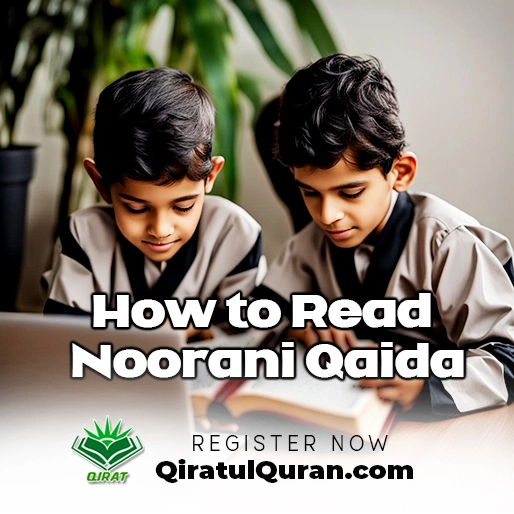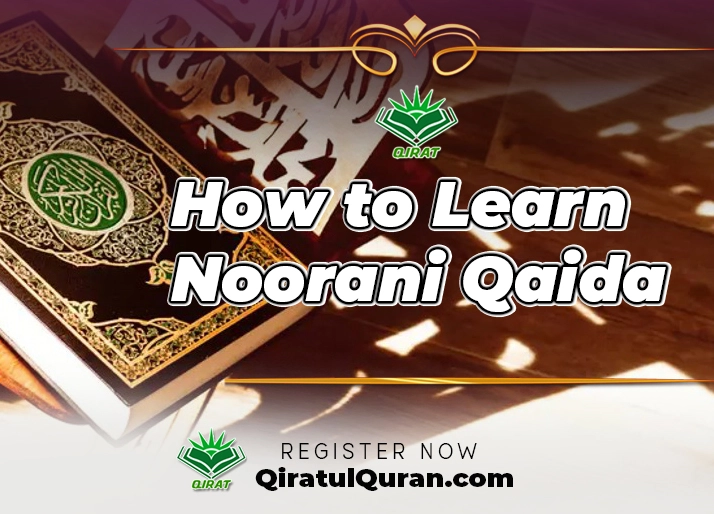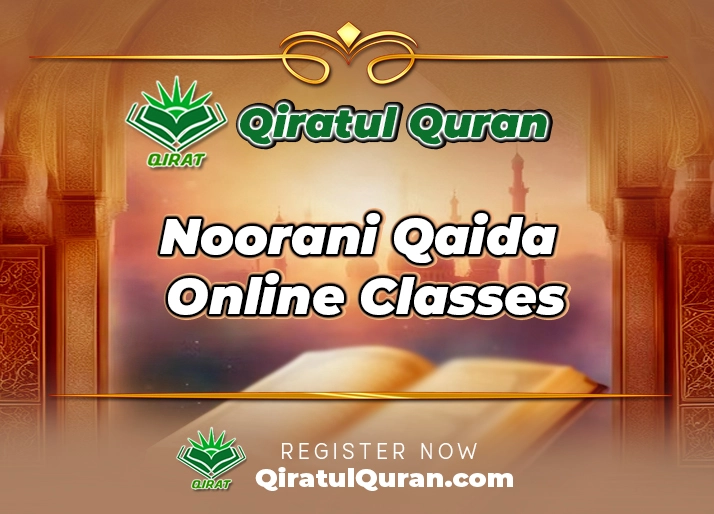The Noorani Qaida is essentially an alphabet book that helps students learn how to read Noorani Qaida the Arabic script and recite the Quran correctly. It serves as the foundation for Quranic Arabic studies, providing guidance on the proper sounds and pronunciation of Arabic letters, basic combinations, and introductory reading exercises through short syllables and words. In Qiratul Quran Mastering the Noorani Qaida helps ensure you accurately recite the words of the Quran.

Get Familiar with the Arabic Alphabet
Before diving into the How to Read Noorani Qaida itself, make sure you have familiarity with the basic Arabic alphabet, including:
The Letter Shapes and Sounds
Memorize the shape, name, and proper sound for each of the 28 letters in Arabic. Some have throaty or guttural sounds not found in English like ح and غ. Listen to recordings of pronunciation until you have clarity on the sounds for each letter.
Letter Joining Rules
Understand which letters are connected when words are written and practice applying those rules. Most letters connect to the following letter but some do not like أ, د, ذ, ر, ز, و.
Letter Form Variations
Learn to recognize letter variants such as the different forms each letter takes depending on where in a word it falls (beginning, middle, or end). This will prepare you for reading joined words where letter shapes change. Therefore, it will help to how to read Noorani Qaida online.
Study Meaning and Format of Noorani Qaida
The Noorani Qaida provides the essential groundwork for proper recitation. Comprehend the meaning behind the structure and flow of its content, which builds progressively:
Individual Letters and Sounds
Introduces each letter sound through words starting with that letter. Reinforce recognition and pronunciation here before moving on.
Letter Combinations
Combines letters into two, three, or four-letter patterns, allowing practice connecting sounds smoothly within words.
Small Words
Gives simple, short words comprised of various letter combinations for reading practice.
Introductory Verses
Applies letter combinations and words into practice verses that incorporate teachings from the Quran.
Learn Proper Recitation Rules
Mastering Noorani Qaida requires correctly applying rules that govern proper Quranic recitation:
Makharij (Outlets)
Understand the origination point or “outlet” in the mouth cavity for each Arabic letter’s sound. This impacts pronunciation.
Timing and Merging Rules
Learn rules about timing and merging sounds for letters and words based on characteristics like the placement or number of assigned timing counts (ḥarakāt).
Assimilation/Manufacturing Rules
Some letters assimilate or “manufacture” other sounds when followed by or preceding certain other letters. Know rules around these shifts that aid fluency.
Applying Rules Automatically
With repetition from the structured Noorani Qaida with Tajweed content, these recitation rules will become second nature when reading the Quranic script.
Use Memorization Techniques
Fluency with the introductory content in the Noorani Qaida requires diligent memorization. Apply proven techniques to master the material:
Frequent Repetition
Repeat individual letter sounds, letter combinations, words, and verses over and over to cement them in long-term memory.
Spaced Intervals
Recite and review memorized content on a spaced schedule instead of cramming right before the assessment. Revisiting after increasing durations aids retention.
Auditory Cues
Hearing supports memorization. Record readings, play them back, and recite out loud along with the recordings.
Visual Mapping
Connect verses’ phrases into a mental picture to “see” them for memory. Draw visuals for mapping relationships between words and sounds.
Check Progress with Assessments
Test for mastery by applying what you learn through structured assessments:
Informal Self-Assessments
Record yourself frequently to check for accuracy and areas needing improvement in pronunciation.
Formal Oral Exams
Have your teacher provide formal listening assessments for official feedback as you progress through different sections.
Written Exams
Test knowledge of material, rules, and concepts through written exams at benchmark levels, ensuring comprehension.
Maintain Consistency Moving Forward
After establishing Noorani Qaida fluency, be sure to maintain consistency and continue progress:
Ongoing Review
Even after “mastering” sections, revisit the alphabet, letter combinations, and intro verses for upkeep through adulthood.
Gradual Advancement
Move gradually through the next levels like further Quranic verses, building in complexity to expand capability.
Expanded Resources
Supplement with additional resources like tajweed tutorials for skill refinement using what you learn from the Noorani Qaida.
Summary
In Qiratul Quran the Noorani Qaida unlocks the gateway to proper Quranic recitation through its structured system. Applying the right study techniques, rules mastery, and progress assessments ensures you gain lifetime comprehension and reading fluency through its alphabet. Stay consistent, and the Noorani Qaida will grant you accuracy in reciting Allah’s words.
Note: If you already completed Tajweed course and can read Quran with Tajweed well so you can enroll to our Advanced Maqamat Course. Click the Whatsapp Button to Enroll.





